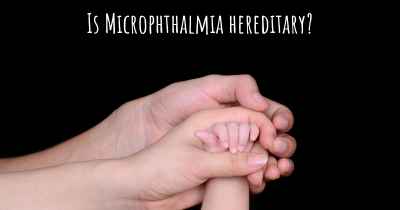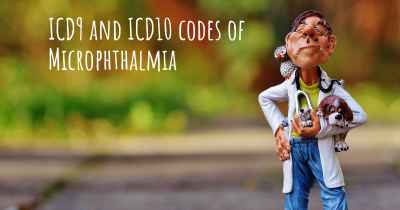Which are the symptoms of Microphthalmia?
See the worst symptoms of affected by Microphthalmia here

Microphthalmia is a rare eye condition characterized by abnormally small eyes. It occurs during fetal development when the eyes do not grow to their normal size. This condition can affect one or both eyes and can vary in severity. Microphthalmia is often present at birth and can be associated with other eye abnormalities and vision problems.
Symptoms of Microphthalmia
The symptoms of microphthalmia can vary depending on the severity of the condition. In mild cases, the eyes may appear slightly smaller than normal but still function relatively well. In more severe cases, the eyes may be significantly smaller and have various associated abnormalities. Some common symptoms include:
- Small eye size: The most noticeable symptom of microphthalmia is the abnormally small size of one or both eyes. The affected eye(s) may be visibly smaller than the normal eye.
- Abnormal eye shape: Microphthalmia can cause the affected eye(s) to have an irregular shape. The eye may appear misshapen or have a different structure compared to a normal eye.
- Poor vision: Microphthalmia can lead to reduced visual acuity or even blindness in the affected eye(s). The severity of vision impairment can vary depending on the size and structure of the eye.
- Strabismus: Strabismus, also known as crossed or misaligned eyes, is a common associated symptom of microphthalmia. The affected eye(s) may not align properly with the other eye, leading to a lack of coordination in eye movements.
- Nystagmus: Nystagmus is an involuntary, rapid, and repetitive movement of the eyes. It can be present in individuals with microphthalmia and can further affect visual function.
- Cataracts: Microphthalmia can be associated with the development of cataracts, which are cloudy areas that form in the lens of the eye. Cataracts can further impair vision and may require surgical intervention.
- Coloboma: Coloboma is another common associated abnormality in microphthalmia. It refers to a gap or notch in one of the structures of the eye, such as the iris, retina, or optic nerve. Coloboma can cause visual disturbances depending on its location and size.
- Other eye abnormalities: Microphthalmia can be accompanied by other eye abnormalities, such as retinal detachment, optic nerve hypoplasia, or abnormalities in the structure of the cornea or lens.
It is important to note that the severity and combination of symptoms can vary widely among individuals with microphthalmia. Some individuals may have mild symptoms and relatively good vision, while others may experience significant visual impairment and require ongoing medical care.
Causes and Diagnosis
Microphthalmia can have various causes, including genetic mutations, chromosomal abnormalities, exposure to certain medications or toxins during pregnancy, and certain maternal infections. It can also occur as part of a syndrome or be associated with other birth defects.
Diagnosing microphthalmia typically involves a comprehensive eye examination by an ophthalmologist. The doctor will assess the size and structure of the eyes, evaluate visual function, and look for any associated abnormalities. Additional tests, such as imaging studies or genetic testing, may be recommended to determine the underlying cause of microphthalmia.
Treatment and Management
While there is no cure for microphthalmia, early intervention and appropriate management can help optimize visual function and address associated complications. The treatment approach will depend on the specific needs of each individual and may involve:
- Corrective lenses: Prescription glasses or contact lenses may be prescribed to improve vision and compensate for refractive errors.
- Vision therapy: Vision therapy exercises can be beneficial in improving eye coordination and visual skills.
- Surgical interventions: In some cases, surgery may be recommended to address associated abnormalities, such as cataracts, coloboma, or strabismus. Surgical options can vary and should be discussed with an ophthalmologist.
- Low vision aids: For individuals with significant visual impairment, low vision aids such as magnifiers, telescopes, or electronic devices can help maximize remaining vision.
- Supportive care: Ongoing monitoring by an ophthalmologist, regular eye examinations, and appropriate support services can help manage the condition and address any emerging needs.
It is crucial for individuals with microphthalmia to receive comprehensive eye care and regular follow-up to ensure optimal visual development and address any potential complications.
Conclusion
Microphthalmia is a rare eye condition characterized by abnormally small eyes. The symptoms can range from mild to severe and may include small eye size, abnormal eye shape, poor vision, strabismus, nystagmus, cataracts, coloboma, and other associated eye abnormalities. Early diagnosis and appropriate management are essential in optimizing visual function and addressing any associated complications. Regular eye care and ongoing support can help individuals with microphthalmia lead fulfilling lives despite the challenges posed by this condition.








